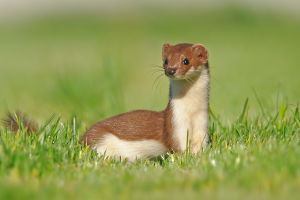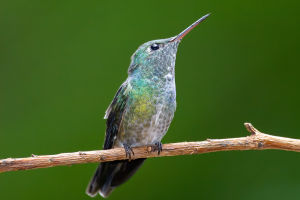The male Rufous Hummingbird, a dazzling creature known for its vibrant plumage and energetic behavior, is a striking sight when perched in a tree, gazing upwards.
This small but mighty bird, scientifically named Selasphorus rufus, is often found in western North America, where its presence adds a splash of color to gardens and forests alike.
This article explores the characteristics, behaviors, and habitat of the male Rufous Hummingbird, focusing on its unique moment of stillness in a tree.
The male Rufous Hummingbird is easily recognizable by its iridescent, fiery orange-red throat, often referred to as a gorget. This brilliant coloration is a result of microscopic structures in the feathers that refract light, creating an almost jewel-like appearance.
In contrast, its back is a rich green, providing a stunning visual juxtaposition. These colors are not just for show; they play a role in attracting mates and establishing territory during breeding season.
When a male Rufous Hummingbird is spotted perched in a tree, looking up, it presents a rare moment of tranquility in an otherwise hyperactive life. Hummingbirds are known for their frenetic energy, constantly flitting from flower to flower in search of nectar.
However, resting in a tree allows these birds to survey their surroundings, spot potential mates, or identify rivals. This behavior is crucial for their survival, as it helps them maintain awareness of threats and opportunities in their habitat.
The male Rufous Hummingbird is fiercely territorial, especially during the breeding season.
While resting in a tree, he may be vigilant about defending his feeding territory from other hummingbirds. His diet primarily consists of nectar from flowers, which he skillfully extracts using his long, specialized bill.
He is also known to consume small insects and spiders for protein, which is essential for his energetic lifestyle.
These hummingbirds thrive in a variety of habitats, including gardens, forests, and open woodlands, where flowering plants are abundant. They are particularly drawn to bright, tubular flowers that provide ample nectar.
As they perch in trees, they often choose vantage points that allow them to keep an eye on both feeding spots and potential threats. This strategic behavior ensures they can maximize their foraging efficiency while remaining vigilant.
The male Rufous Hummingbird is also renowned for its impressive migratory journey. Each year, they undertake one of the longest migrations of any hummingbird species, traveling from their breeding grounds in North America to wintering areas in Mexico.
During migration, resting in trees is vital, as it allows them to conserve energy and regroup before continuing their journey.
The sight of a male Rufous Hummingbird perched in a tree, looking up, encapsulates the essence of this remarkable bird. With its vivid plumage and spirited personality, it represents the beauty and complexity of nature.
Whether surveying its territory or preparing for migration, this moment of stillness highlights the balance between activity and rest in the life of a hummingbird.
As we appreciate these vibrant creatures in our gardens and natural landscapes, we are reminded of the intricate connections within our ecosystems and the importance of preserving their habitats for future generations.


